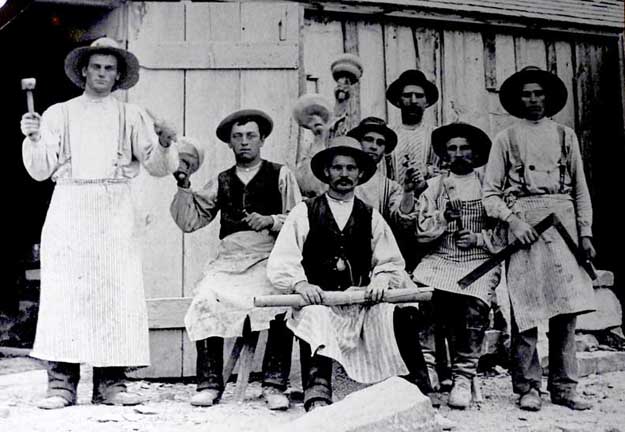Building Materials - Table of Contents........................... Illustrated Architecture Dictionary
Onondaga
Limestone
TEXT Beneath Illustrations
|
Onondaga limestone. The dark stone is chert, also known as flint |
Onondaga limestone wall in Scajaquada Expressway near Parkside |
Onondaga limestone wall along Niagara River. Originally constructed when Erie Canal was being built. |
|
|
The base rock of the Buffalo Lighthouse is Onondaga limestone |
32 Summit Ave: Two
story-garage. |
361 Porter Ave foundation |
Hayes Hall on UB's Main Street campus is built of two types of limestone |
 |
|||
|
Delaware Park, near Parkside Lodge. Former site of Onondaga limestone quarry (next Illustration) |
Delaware Park, near Parkside Lodge. Onondaga limestone quarry |
|
|
Other examples from Buffalo:
Characteristics:
Uses:
Onondaga escarpment:
Onondaga escarpment in Buffalo:
Former quarries in Buffalo:
Former quarries near Buffalo:
 Fogelsonger Quarry workers, c. 1890 ... On display at the Buffalo Niagara Heritage Village Museum in November 2017 Fogelsonger had one of the most well-known quarries in the region. His property included a geologically significant portion of the Onondaga escarpment, one of several large quarries bertween Buffalo and Rochester. The Onondaga escarpment was the remains of a large coral reef. Many fossils are represented in great numbers here. You can still see the strata of limestone rock on the walls of the underpass of the Expressway under Main Street. It was discovered that a special layer of the stone could be burned down to produce "hydraulic cement," a waterproof mortar that would harden under water and remain waterproof. The value of the local limestone deposits were so important in the building of the Erie Canal in the early 1820s that many of the grist mills, such as that belonging to John Fogelsonger, were converted to cement mills. This quarry was run by the Fogelsonger family for over 50 years until it was sold in 1887; in 1855, four Fogelsonger families lived on the property, all in stone houses, of course [219 Park Club Lane]. The quarry on
James Youngs' property, known as "Lime
Ledge," covered 220 acres and according to a report from one of Young's
sons, the "quarry produced the strongest and whitest of
lime." There were four lime kilns on the property,
and some of the remains can still be seen.
A quarry
and lime kilns were also located near Glen
Park, where the Duck Pond is now. It is quite possible that
the
stone for many of the houses we know today came from a small quarry
near
each one.
- TEXT: Cohen, Lerner, & Simon, The Stone Houses of Amherst, New York |
